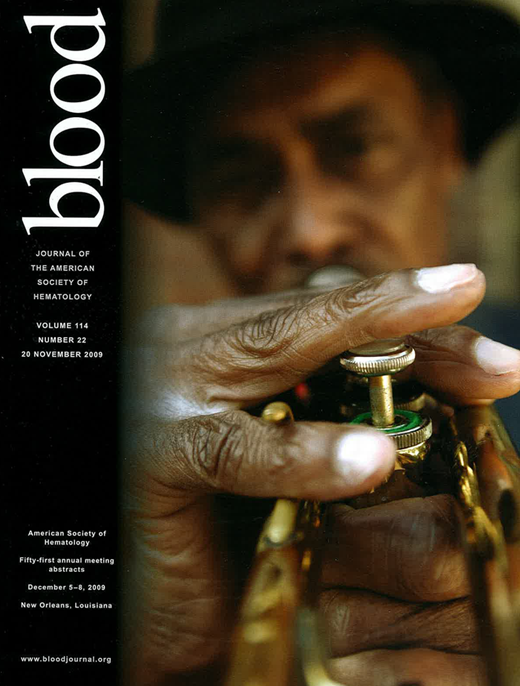Abstract
Abstract 3697
Poster Board III-633
Originally, rituximab monotherapy for patients with relapsed or refractory aggressive lymphoma was developed with eight weekly cycles of infusions. However, in combination with R-CHOP therapy, it designed a treatment protocol of tri-weekly rituxiamb. Then four phase III studies were also reported of tri-weekly rituximab in combination with CHOP therapy. We hypothesized that a combination of eight dose-dense weekly cycles of rituximab concentrated in early initial therapy, and six cycles of standard CHOP (DR-CHOP) might result in greater improvement than that obtained with tri-weekly standard R-CHOP.
To evaluate the clinical outcome of combination with eight dose-dense weekly cycles of rituximab and six cycles of standard CHOP (DR-CHOP) in patients with newly diagnosed diffuse large B-cell lymphoma (DLBCL). In addition, the pharmacokinetic (PK) parameter of serum rituximab concentration was analyzed.
One hundred twenty-three patients were treated with DR-CHOP regimen in Cancer Institute Hospital from June 2003 to July 2007. All the histopathology samples were reviewed according to the WHO classification by an expert hematopathologist. Patients with transformed lymphomas from indolent B-cell lymphoma were excluded from this study. Baseline patient characteristics included a median age of 66 years (range, 24-88 years), fifty-one patients with low risk International Prognostic Index (IPI), 35 with low-intermediate IPI, 20 with high-intermediate IPI, and 17 with high IPI. In sixteen patients, prospective PK of serum rituximab concentration was analyzed.
Rituximab was administered on day 1, 8, 15, 22, 29, 36, 43, and 50. CHOP followed the administration of rituximab on day 1, 22, and 43. After eight cycles of infusions of rituximab, only CHOP was administered (cycle 4-6).
At a median follow-up of 38 months, the 3-year progression-free survival and overall survival rates were 80.9% (95% confidence interval [CI], 74.0% to 87.9%) and 85.3% (95% CI, 78.8% to 91.9%), respectively. The treatment was tolerated well, and no grade 5 adverse events were observed. Maximum serum concentration of rituximab (Cmax) was 396±74 mcg /mL on day 50 (after cycle 8 of rituximab). No statistical difference in PK of serum rituximab levels was observed between relapsers and non-relapsers.
DR-CHOP was safe, feasible, and promising good clinical outcome regimen for patients with newly diagnosed DLBCL. However, this was a retrospective study, not poerwful enough to deal with efficacy. To confirm these results, larger studies are being planned to estimate the efficacy of DR-CHOP for patients with DLBCL. Now a phase III multicenter study (DR-CHOP versus standard R-CHOP) in Japan is underway.
No relevant conflicts of interest to declare.
Author notes
Asterisk with author names denotes non-ASH members.

